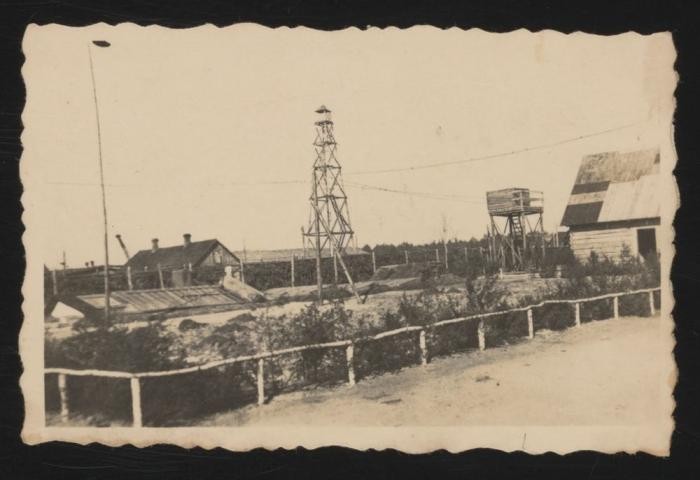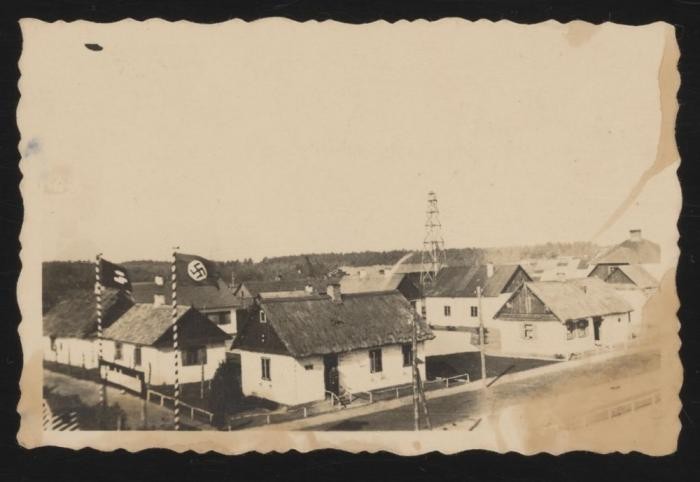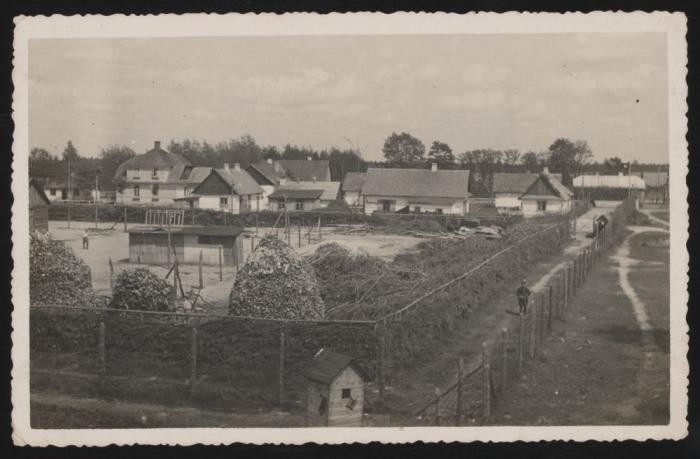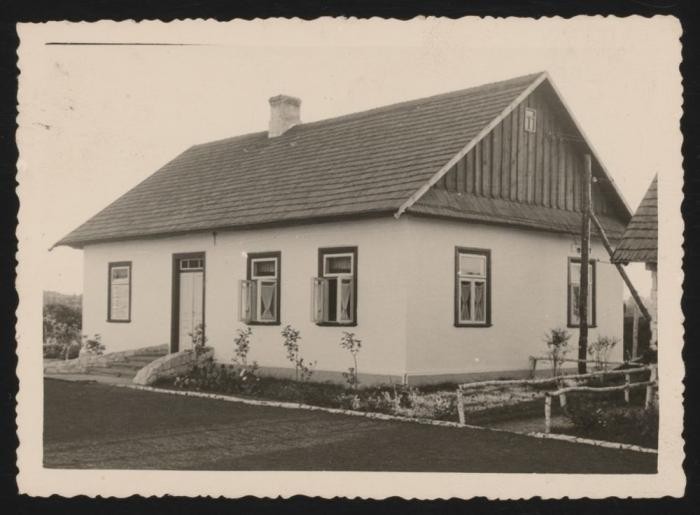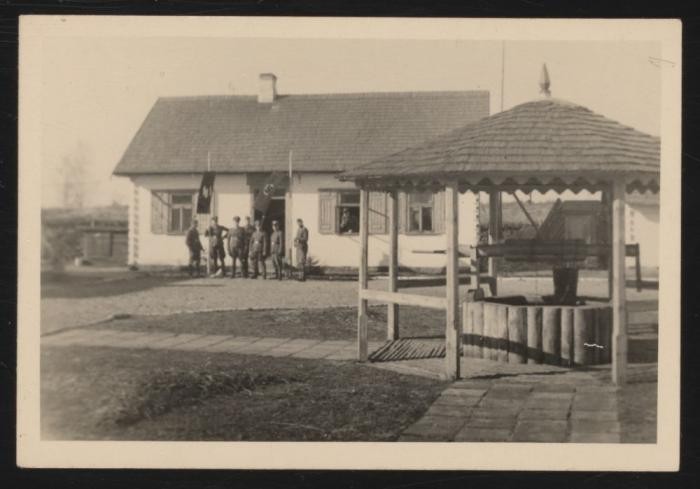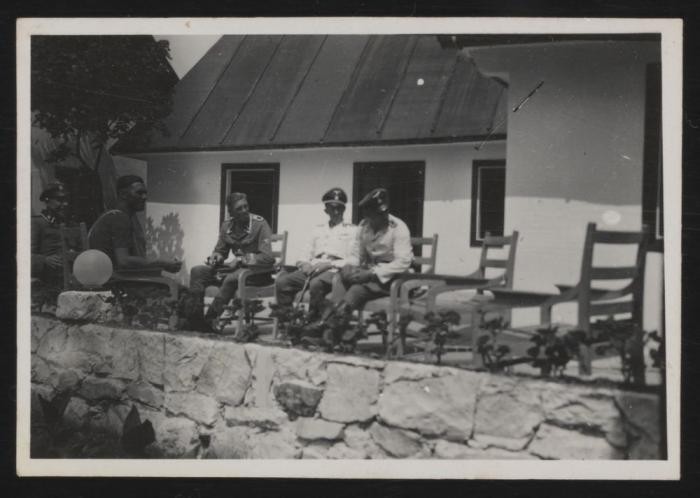Grafeneck T4 Facility
The Grafeneck T4 facilty was the first centralized killing center to be established by German authorities within the context of the Nazi “euthanasia,” or T4, program. During the year it was in operation, over 10,000 people with disabilities were killed by the Nazis at Grafeneck.
Key Facts
-
1
The Nazis established the Grafeneck T4 center, which began killing operations in January 1940.
-
2
The Grafeneck facility was established as part of the T4 program to kill patients who had mental and physical disabilities and were in care facilities in Germany.
-
3
Of the approximately 100 T4 operatives who murdered people at Grafeneck, only 3 defendants were convicted. The chief perpetrators at Grafeneck escaped justice entirely.
Grafeneck Castle
Grafeneck Castle (Schloss Grafeneck) was built near the city of Tübingen in southwestern Germany around 1560. It was originally a hunting lodge for the dukes of Württemberg. Later modernized, the complex was privatized in 1904. In 1928, it came into the possession of the Samaritan Foundation (Samariterstiftung), a charitable arm of the German Lutheran Church. The foundation established a care facility for male patients with disabilities at Grafeneck in 1929.
In October 1939, the Nazis transformed Grafeneck Castle from a care facility into the first centralized killing center within Aktion T4 (the Nazi Euthanasia Program). The goal of this program was to kill patients with mental and physical disabilities living in institutional settings. In the Nazi view, the T4 program was meant to cleanse the “Aryan” race of people considered both genetically defective and a financial burden to society. By killing patients who had disabilities in Germany, the Nazis aimed to restore the racial "integrity" of the nation.
Establishing the Killing Center at Grafeneck
When T4 operatives began to identify sites to serve as killing centers for the adult euthanasia program, they first chose the Grafeneck complex. The isolated location of the castle in the hills of the Swabian Alb appealed to their need for secrecy. The surrounding forest shielded the site from public view and only two entrances led to the facility. On October 6, 1939, high ranking T4 officials confiscated Grafeneck “for the purposes of the Reich.” Soon thereafter, caretakers at Grafeneck, as well as the facility’s 110 male patients, were removed from the complex.
By late October, T4 operatives arrived to convert the care facility into a killing center. On the castle grounds they erected a wooden barracks with beds. A construction team transformed the old coach house behind the castle into a makeshift gas chamber.
The castle itself housed the facility’s administrative offices. It also included a special registry office which issued the victims’ death certificates without attracting the attention of local officials. The death certificates were issued with falsified causes and dates of death.
T4 Personnel at Grafeneck
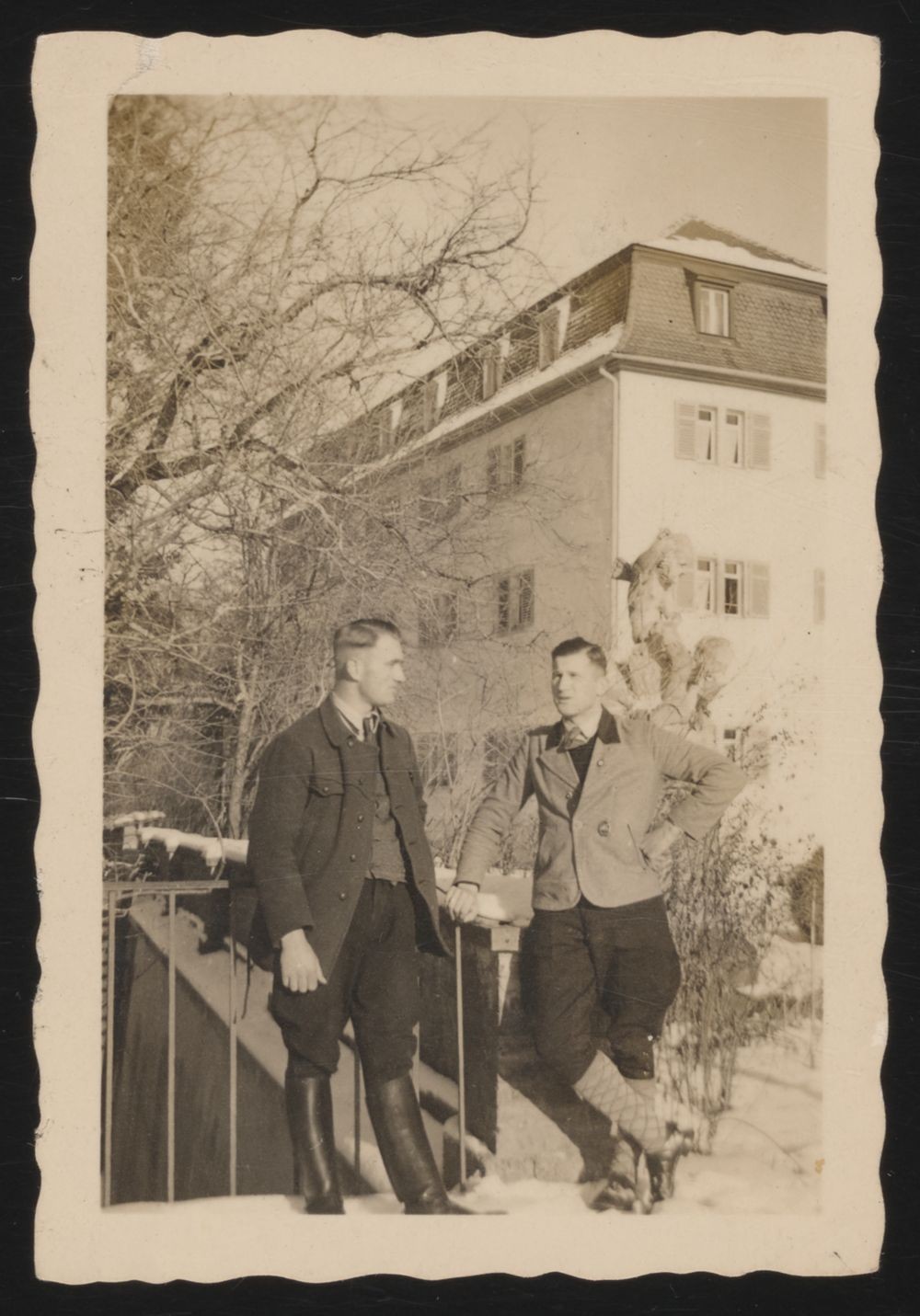
On January 6, 1940, T4 personnel who were recruited for the secret killing operation arrived at the facility. At their head was Grafeneck’s new medical director, physician Horst Schumann. In late May or early June 1940, Schumann was transferred to the T4 killing center at Sonnenstein, near Dresden. At Grafeneck, Dr. Ernst Baumhard replaced Schumann as medical director.
Approximately 100 Grafeneck personnel worked under Schumann’s, and later Baumhard’s, direction. These included physicians, nurses, transport personnel, administrative staff, police, and security officials. They also included the so-called Brenner (“burners” or “stokers”) who cremated victims’ corpses in the crematoria.
Grafeneck Victims
Grafeneck was the first functioning T4 killing center. Its operations commenced on January 18, 1940. Twenty-five male patients arrived from the Eglfing-Haar facility in Munich that day. Dr. Schumann personally escorted them to the old coach house. There, Schumann gassed them in the newly constructed gas chamber. From this date until December 1940, personnel killed patients by means of gassing on an almost daily basis, excluding Sundays and holidays.
Throughout the year, transport personnel collected disabled patients targeted by euthanasia authorities. The patients were transferred by bus from their home institutions to Grafeneck. Within hours of their arrival, they were ushered into the gas chamber. The gas chamber was disguised as a shower installation. The patients were gassed with pure, chemically produced carbon monoxide gas. The physician viewed the victims through a small window in the gas chamber door. After confirming they were dead, he summoned the facility’s stokers. The personnel removed the bodies and incinerated them in three crematory ovens.
The first people killed at Grafeneck came from the southwest region of Germany. Most were patients at institutions located in the states of Baden and Württemberg. But Grafeneck's geographic reach expanded as patients were brought there from further afield, including from Bavaria, Hessen, and North Rhine Westphalia.
End of Operations at Grafeneck
In December 1940, the killings at Grafeneck came to an abrupt end as the clandestine activities at the castle began to attract public attention. In response to public pressure, euthanasia officials hastily deactivated the killing center. The last gassing of patients and the cremation of their remains took place on December 12–13, 1940.
According to internal statistics kept by the T4 program, 9,839 patients were killed at the Grafeneck facility. During a trial in 1949, however, West German authorities established that the number of victims was higher than wartime records showed, with 10,654 persons murdered at the facility.
Grafeneck Staff at T4 and Operation Reinhard Killing Centers

Shortly before Grafeneck closed, most of the facility’s staff transferred to the newly established Hadamar T4 facility near Frankfurt in Hessen.
Both Grafeneck medical directors, Schumann and Baumgard, continued their murderous work at other killing centers. Schumann had already been transferred to the T4 killing center at Sonnenstein in late May or early June 1940. He later conducted brutal sterilization experiments at the Auschwitz camp complex. And when the Grafeneck facility closed, Baumhard and his deputy, Dr. Günther Hennecke, transferred to the Hadamar T4 killing center.
In addition, several T4 operatives at Grafeneck later served as German personnel in the killing centers of Operation Reinhard (Belzec, Sobibor, and Treblinka). These included: Kurt Franz, the last commandant of Treblinka; Lorenz Hackholz, a gassing specialist; and German guards Willi Mentz, August Miete, and Heinrich Unverhau. Johann Niemann, who worked as a stoker at Grafeneck, eventually became the deputy commandant of Sobibor.
Postwar Justice
The perpetrators of the “euthanasia” killings at Grafeneck were not immediately called to account for their crimes. After the German surrender in May 1945, the Allied occupation left euthanasia offenses—a German-on-German crime—to newly reconstructed German courts. In the early postwar years, West German courts pursued such cases diligently. Defendants who were found guilty incurred stiff sentences.
By 1948, however, concerns about the Cold War encouraged a comprehensive clemency policy for Nazi crimes. For example, approximately 100 T4 operatives collaborated to murder thousands of patients at Grafeneck. Only eight of these perpetrators were tried. Their proceedings were held in Tübingen from June 8 until July 5, 1949. Further, only three of the eight defendants were convicted. Their sentences ranged from one and a half to five years. The chief perpetrators escaped justice entirely.
After resigning from the T4 organization during World War II, gassing physicians Ernst Baumhard and Günther Hennecke joined the German navy. Both died in battle in 1943.
Grafeneck’s first T4 physician, Horst Schumann, who later served at Auschwitz, evaded capture by West German authorities. Schumann fled to Africa where he operated a leper colony in Sudan. In 1966, he was extradited from Ghana. Schumann appeared before a German court in September 1970. However, proceedings were halted in March 1971. Due to his ill health, Schumann was released from remand prison in July 1972. He died in 1983.
Collections Highlight: Grafeneck Photos in The Sobibor Perpetrator Collection
In 2020, the descendants of Johann Niemann donated what is called The Sobibor Perpetrator Collection to the United States Holocaust Memorial Museum.
In addition to rare photographs of the Sobibor killing center, this collection contains over 360 black and white photographs and dozens of documents that chronicle Niemann's social background, his family, and his SS career. Nine of the photographs were taken at Grafeneck (circa 1940–1941) while Niemann worked there as a stoker.
The collection also traces Niemann’s career in the Nazi concentration camp system. Niemann worked at Esterwegen and Sachsenhausen. He was also part of the T4 “euthanasia” program at Brandenburg and Bernburg. He eventually rose in the ranks and worked at two Operation Reinhard killing centers: Belzec and Sobibor. In Sobibor, Niemann worked as the deputy commander. He was killed during the Sobibor prisoner revolt on October 14, 1943.


